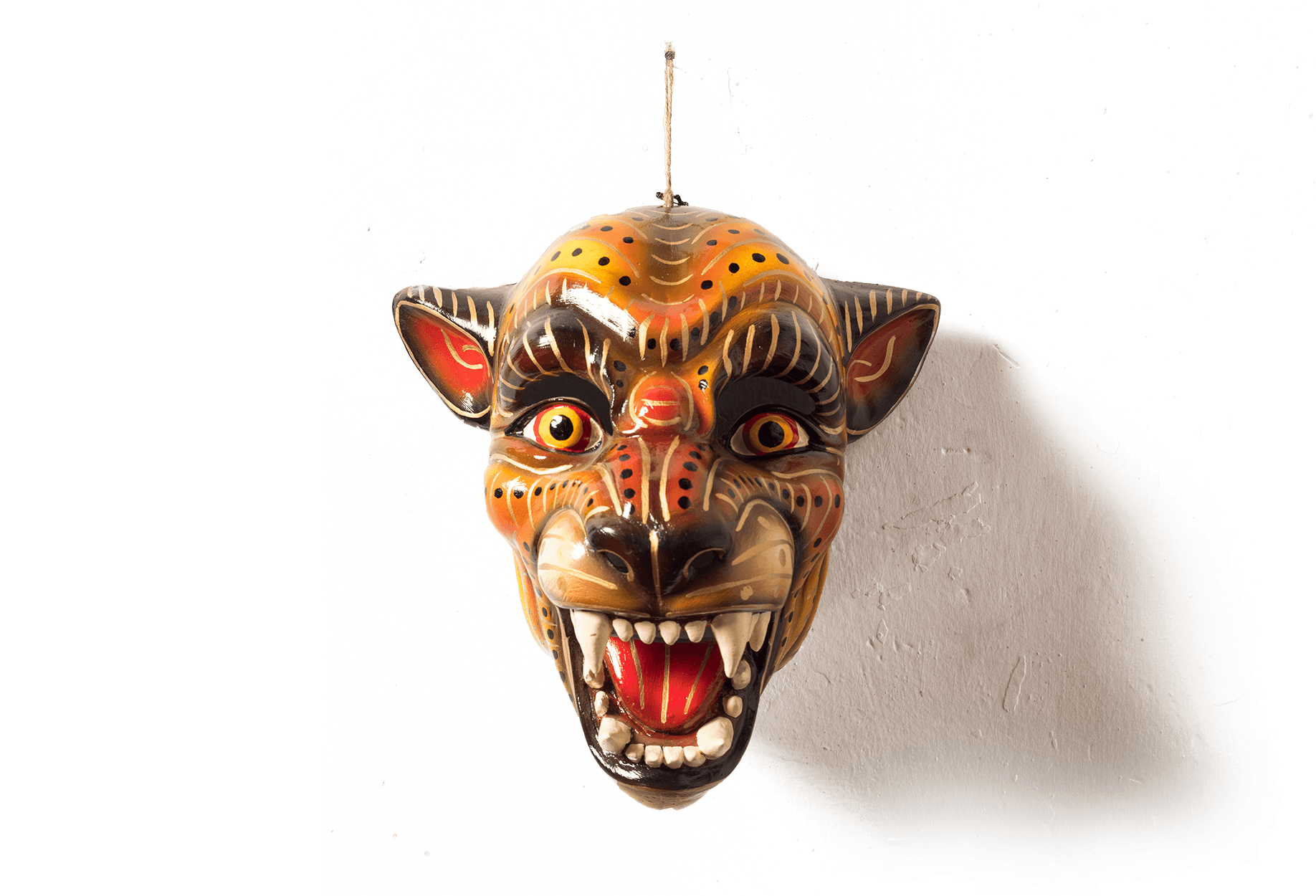
History behind the piece
Pre-Hispanic masks have been found not only in archaeological excavations, but also in representations embodied in ceramics and textiles from cultures such as Mochica, Chimú and Paracas. In the cave paintings of Sumbay in Arequipa, the oldest references on the use of them in Peru have been collected, and it is known that the vicuña hunters of the pre-ceramic period, around 2000 B.C., would have carried out this activity masked to discreetly approach its prey. It becomes clear then, that the mask is part of the cultural heritage of man and that he has not been detached from it for thousands of years.
In the Andes, its manifestation does not constitute an exotic, picturesque, much less archaic practice; on the contrary, it reflects a sensible way of contextualizing historical and social references, in order to later integrate them into the current reality of the population. That is why its importance resides mainly in its capacity not only to build, but also to affirm the cultural identity of a community. In more recent decades, studies on masks have also begun to emphasize the more dynamic aspect of this traditional expression, highlighting its relevance as a mediator for specific groups to express themselves and find a space for dialogue and participation within larger contexts.
Regarding the uses of the mask, the most representative would undoubtedly be the one linked to a ritual: dance. In Paucartambo, Cusco, the place where this piece originates, between July 15 and 19 of each year a mixture of traditions, dances and troupes are celebrated which constitute the ritual, mythical and social context in which hundreds of masked people interact during the 5 days in which the worship of the Virgen del Carmen takes place, one of the most important and notable folkloric events in Peru.
Although the Virgen del Carmen is a figure of Spanish origin, when the indigenous population, who constituted the majority, initially introduced dances and indigenous customs to the feast of the saint of the town, such a shift was generated, which ended with seize the worship itself. The extravagant costumes and masks together with the music, the complexity of the choreographies, the organization and discipline of the dancers and their troupes, can be considered as the causes and the means through which the history and identity of Paucartambo are explained and build. This mask, in particular, is a piece that preserves the traditional characteristics of shape, color, decoration and size typical of the masks attributed to the Saqras troupe, an example that is also considered an expression of ethnographic art1.

In Quechua, “saqra” means devil, but not in a negative or allusive connotation to evil or dangerous, for which the use of the term “supay” would be correct. Saqra, on the other hand, is a mischievous and tempting devil.
After the Spanish conquest, the Cusco school of painting arose in Peru during the 17th and 18th century, where paintings of the Virgen del Carmen accompanied by devils and animals began to be contemplated. However, the Saqra was introduced to Paucartambo at the beginning of the 20th century by young people from the town of Qatqa who attended to honor the Virgin, characterized by an attire very different from the current one: a single-colored or bicolor cloth suit, tail, boots with spurs, whip and horns; only the wig was like the current one and the mask, at that time, represented a normal human. This wardrobe was transformed by Antonio Vivero Calderón, a multidisciplinary artist who introduced clothing embroidered with tinsel ornaments. Later, David Villasante Gonzáles includes the modifications present in the masks and embroidery that are appreciated today, previously observing the colonial paintings of the Virgen del Carmen and San Antonio de Abad, both typical of the Cusco school.
During the festivity of the Virgen del Carmen, within the Saqra troupe, each mask is different from the other, although all of them correspond to a stereotype that allows them to be identified as masks of the same group, achieving the idea of unity despite the variety and constant renewal of characters. Large teeth and fangs are characteristic, in addition to the use of large wigs on which deer antlers are attached, always representing a humanized, parodied and humorous version of Lucifer with zoomorphic features that include a wide variety of animals.
In Cusco the making of masks is linked to the art of imagery and in Paucartambo there are numerous workshops of artisans dedicated to making masks in different techniques and materials. For the creation of this piece, the fiberglass modeling technique was used, a method that is achieved by making an original clay mask that will serve as a mold and on which the fibers will rest in layers to form the replica. Then, after the modeling process is finished, the mask is given the background color and later, the details of the face will be painted on top and some additional decorative element will be added, if necessary.
This specific mask, along with nearly twenty other specimens, plays within the set of elements that make up the festival of the Virgen del Carmen, the most outstanding and representative aspect of it. Without them, the party is just a revelry. With the masks the festival enters a path beyond reality, with old presences that give the festival its unforgettable transcendent character.
Origin: Paucartambo, Cusco
Measurements: 27,5 cm heigth x 26 cm width x 19 cm depth
Condition: Excellent
SKU: 0403-38
Measurements: 27,5 cm heigth x 26 cm width x 19 cm depth
Condition: Excellent
SKU: 0403-38
USD
$ 290.00
$ 290.00
1Ethnographic Art is considered to be that production made by the member of an ethnic group, made exclusively for personal or communal use, and that necessarily carries a cultural load of the people to which it belongs.
ADD THIS PIECE TO YOUR WISH LIST
